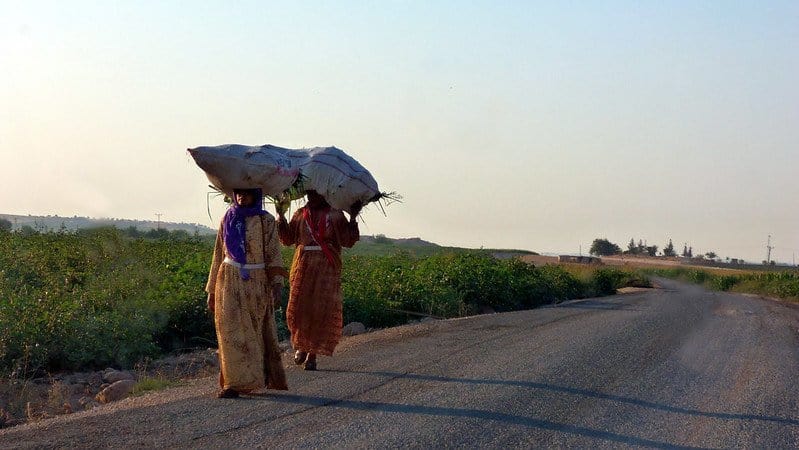Welcome back to The Fixer, our weekly briefing of solutions reported elsewhere. This week: a method of political canvassing that leverages empathy, listening and learning. Plus, permeable pavement cuts down on nasty road salt in a Minnesota suburb, and old traditions bring sustainable farming back to the cradle of civilization.
Empathy for the win
Political canvassing is typically meant to rally the base. But what if it was a way of reaching out to the opposite side of the aisle instead? This type of door-to-door politicking, called “deep canvassing,” uses empathetic dialogue and active listening to find common ground with voters who don’t necessarily agree with your candidate.
A group called Changing the Conversation Together is using this method in the run-up to the U.S. election. “There’s a whole world of voters in the middle longing for connection,” said one of its organizers. The group’s canvassers go door to door, talking to residents who normally vote Republican. But rather than attempt to sell those residents on a Democratic candidate, they simply engage in personal conversation, framing dialogue in terms of understanding, cooperation and even love. Some share intimate information about their own families, jobs and finances — personal details intended to signal that we all share the same essential values.
https://www.youtube.com/watch?time_continue=112&v=gA_ZpGb4xq0&feature=emb_logo
The method is proven to work. Two years ago, volunteers from Changing the Conversation Together traveled to a Staten Island district that voted for Trump in 2016. After talking to 1,900 voters there, that same district voted for the Democratic candidate in the 2018 midterm elections. It wasn’t a fluke — research supports the approach. One study found that just a 10-minute conversation with voters about transgender rights reduced their transphobia in way that lasted long after the canvasser left.
Read more at the New York Times
Seeds of change
Across the plains of Mesopotamia, the birthplace of agriculture, farmers are struggling. Groundwater levels have plunged, while flooding rains have drowned recent lentil and wheat harvests. An initiative called Living Soil, Local Seed — started by chef Ebru Baybara Demir, who owns a celebrated Turkish restaurant here — is unearthing knowledge from local villagers to improve agricultural outcomes. As it turns out, thousands of years of accumulated farming knowledge comes in pretty handy.
The organization bought two tons of native wheat from the villagers, and learned their age-old techniques for how to grow it without using irrigation or chemical fertilizer. Then, the group passed on the crops and knowledge to a collective of 70 small-scale women farmers — half of them Turkish, half of them Syrian — so they could try farming in the “new” old ways.

That was two years ago. Today, the collective of 70 women has grown to 350, and the area of land they’re farming has expanded from its initial 2.5 acres to 160. Their June harvest yielded 485 tons of wheat, all of it sustainably grown. Demir says the effort is at least a little selfish: “I’m a chef, and I realized if I want to still be working as a chef in 10 years, food must become more sustainable.”
Salty Midwesterners
Winters in Shorewood, Minnesota are no joke, and every year, the town dumps massive amounts of salt onto the roads, which it buys at the bargain price of $70 per ton. But the “true cost” of road salting is far higher — it includes rusting cars, eroding bridges and seasonally polluted waterways. A local professor’s calculation revealed the true cost of Shorewood’s road salting to be $1,400 per ton of salt.
This true cost is what prompted the town to look for ways to reduce the need for road salting. The solution they came up with is a mix of old-school and sci-fi: permeable pavement. In 2009, Shorewood began replacing the asphalt on its streets with a kind of road surfacing that absorbs water. The lack of water reduces ice, which decreases the need for lots of skid-reducing salt. The results have been impressive: a 2013 evaluation found that the new surfacing was holding up well after four years, and the city is using less salt in the winters as a result. Now, officials report that residents whose streets haven’t yet gotten the permeable treatment are requesting that their neighborhoods be put on the list.







